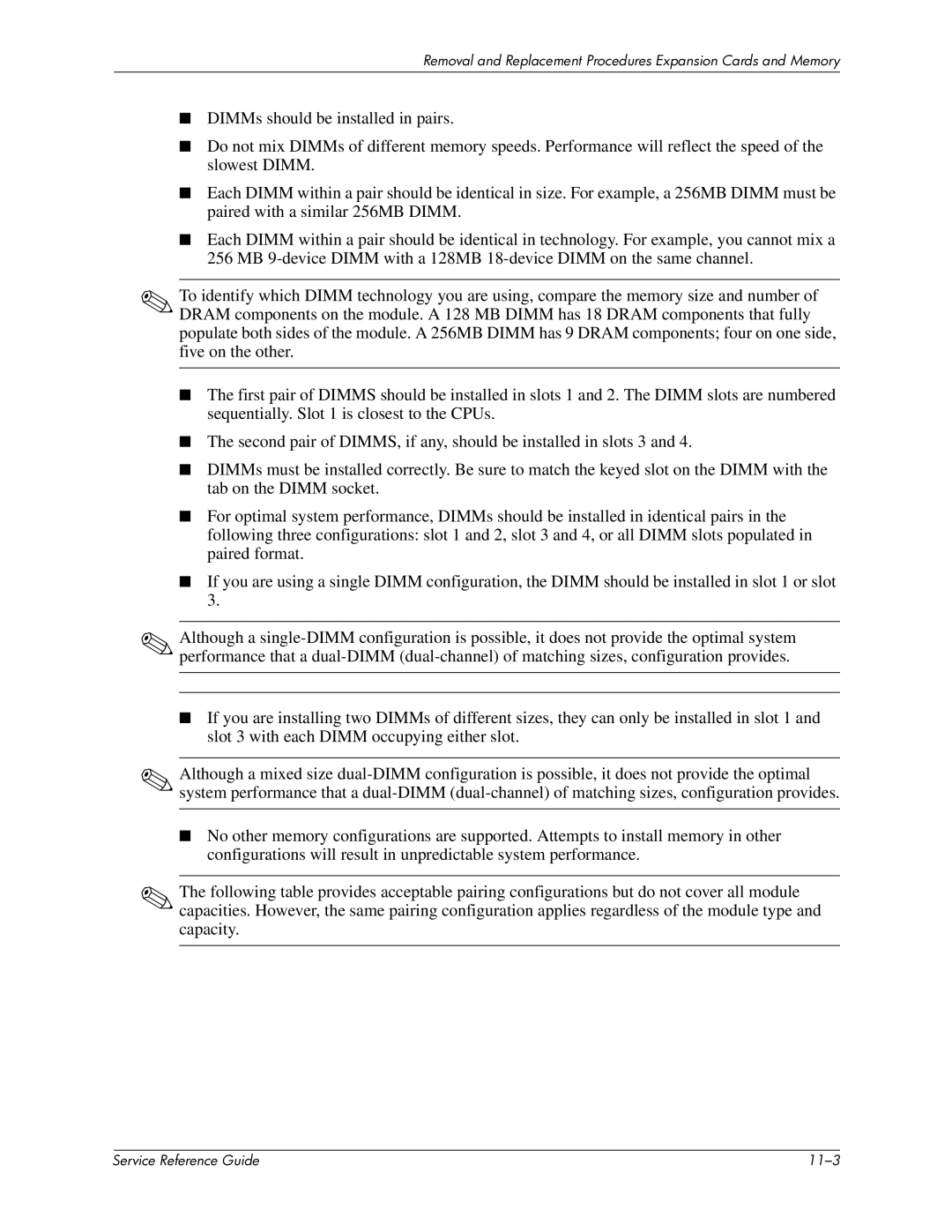
Removal and Replacement Procedures Expansion Cards and Memory
■DIMMs should be installed in pairs.
■Do not mix DIMMs of different memory speeds. Performance will reflect the speed of the slowest DIMM.
■Each DIMM within a pair should be identical in size. For example, a 256MB DIMM must be paired with a similar 256MB DIMM.
■Each DIMM within a pair should be identical in technology. For example, you cannot mix a 256 MB
✎To identify which DIMM technology you are using, compare the memory size and number of DRAM components on the module. A 128 MB DIMM has 18 DRAM components that fully populate both sides of the module. A 256MB DIMM has 9 DRAM components; four on one side, five on the other.
✎
✎
■The first pair of DIMMS should be installed in slots 1 and 2. The DIMM slots are numbered sequentially. Slot 1 is closest to the CPUs.
■The second pair of DIMMS, if any, should be installed in slots 3 and 4.
■DIMMs must be installed correctly. Be sure to match the keyed slot on the DIMM with the tab on the DIMM socket.
■For optimal system performance, DIMMs should be installed in identical pairs in the following three configurations: slot 1 and 2, slot 3 and 4, or all DIMM slots populated in paired format.
■If you are using a single DIMM configuration, the DIMM should be installed in slot 1 or slot 3.
Although a
■If you are installing two DIMMs of different sizes, they can only be installed in slot 1 and slot 3 with each DIMM occupying either slot.
Although a mixed size
■No other memory configurations are supported. Attempts to install memory in other configurations will result in unpredictable system performance.
✎The following table provides acceptable pairing configurations but do not cover all module capacities. However, the same pairing configuration applies regardless of the module type and capacity.
| Service Reference Guide |
|
